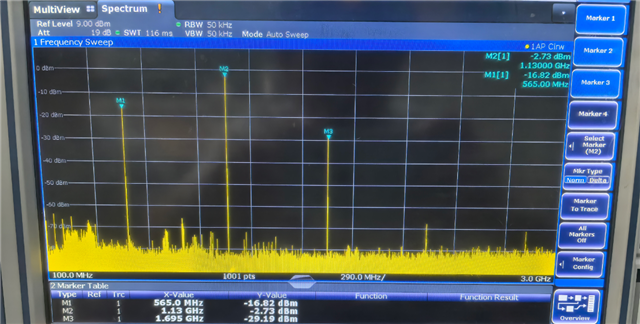The required frequency range for our point-frequency signal is 10 MHz to 1.2 GHz, with a harmonic suppression requirement of greater than 50 dBc for the output signal. Therefore, we connected a low-pass filter (model: LFCG-1200+) to the output port RFoutA. We observed that when the output port matching is poor and the OUTx_PWR is set to any value between 28 and 31, the spectrum shows not only the fundamental signal but also subharmonic signals at half and one-and-a-half times the fundamental frequency, with very high output power. However, when OUTx_PWR is set between 1 and 27, these subharmonic signals disappear. This phenomenon occurs specifically in the frequency range of 1.13 GHz to 1.19 GHz and is not observed in other frequency bands.
We would like to ask:
-
Why does this phenomenon occur?
-
Why is it only observed in the 1.13 GHz to 1.19 GHz range and not in other frequency bands?
The observed phenomenon is as follows:



